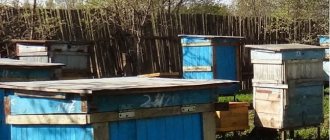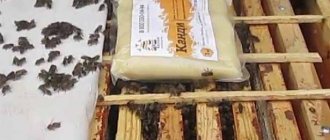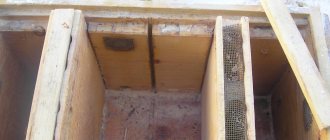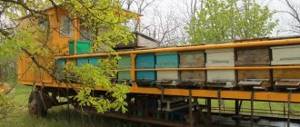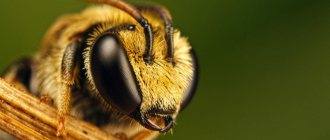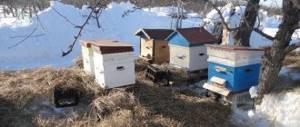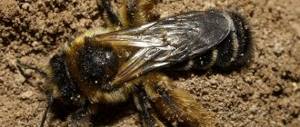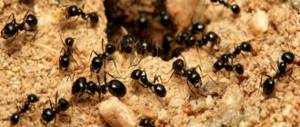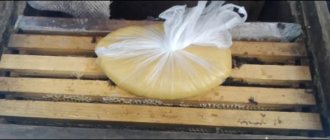Beginning entrepreneurs strive to organize their own business in such a way that it gives the desired profit and brings pleasure. Beekeeping as a business is a common activity. It can really become a source of good income if the work is organized correctly and the existing risks are taken into account. Many are interested in this type of activity, but they are frightened by the lack of knowledge, information and skills in the field of insect breeding. In practice, keeping bees is not troublesome, but there are certain subtleties and features.
Before you start organizing beekeeping, decide how much you are willing to invest in the development of the business, and what income you plan to receive. Keep in mind that insects do not produce honey all year round. The food collection season lasts six months.
Advantages and disadvantages of beekeeping
Like any type of activity, beekeeping has its advantages and disadvantages.
Advantages
- Profitability of beekeeping. You can earn income in the first year of entrepreneurship. Rationally planned costs will cover the initial investment. It is not necessary to purchase new equipment and tools for organizing an apiary. The type of activity does not require rent for space, premises and equipment. Practice shows that for beginning businessmen the costs are recouped within 2 years, for experts in beekeeping with experience - in the first season.
- The beekeeping business does not require hired workers. The beekeeper is the only worker. This significantly reduces staff wage costs. Profits from the sale of products are used to expand the business and pay taxes.
- Possibility to organize a business in several stages. You can invest money in development and expand your business gradually, not all at once.
- No special education or courses required. There are many videos and topical material on social networks for beginners and experienced beekeepers.
- An apiary as a business can exist as an additional source of income and is easily combined with the main activity.
- Honey and other bee products are obtained without much effort. The beekeeper does not need to spend a lot of time and effort caring for insects. Their existence does not depend on human activity.
- The price of the inventory and equipment necessary to make honey is relatively low .
Flaws
- The high cost of honey. The cost of a natural product is quite high, so it is quite difficult to form a customer base.
- High competition.
- Unfavorable climatic conditions. Rainy weather, cold, damp climate in Russia negatively affect the life of bees. The volume of production is decreasing.
- Bee diseases.
- Lack of environmentally friendly areas for beekeeping.
- The presence of allergic manifestations to insect bites and their metabolic products.
We implement a business idea for opening an apiary
Opening a profitable business on beekeeping products requires desire, knowledge and initial capital. A step-by-step guide will help you better navigate and turn your idea into a real, profitable business.
We decide on places to sell products
When opening a small apiary, the main places of sale will be markets, shops, fairs, friends and acquaintances. You can also learn to sell online. Create a website or blog. You can even offer pickup.
Many people are willing to do this. They are interested not only in taking the freshest honey, but also in seeing how it is produced. You can find contacts with wholesalers. Sell honey to them or to large retail outlets.
❗ Delicious honey - regular customers.
Regular customers mainly appear to the beekeeper through word of mouth.
Choosing a plot of land to place an apiary
Bee breeding should be carried out outside the territory of the populated area. The best place is a field with honey plants. You can even plant the necessary plants if there is no owner of the field or it belongs to you. Fruit trees can be planted next to the field. To select a site, you should be guided by what kind of beekeeping you will be doing: stationary or nomadic farming.
If there is a stationary apiary, then it is better to choose places outside populated areas. Where there are fields with honey plants, and you have the opportunity to plant them there. So that there are no industrial production or highways in the area. There are trees and large shrubs from the winds from the northern part.
For a nomadic apiary, you need a trailer for transporting beehives. And you will need to look for new places for migration every year. If possible, prepare the future apiary a year in advance and plant honey plants in it.
We buy bee colonies and houses for them
The apiary should be populated in early spring. Since the climate is different everywhere, bees should be purchased in accordance with the area where they are bred. Certain breeds are suitable for one area.
Bee breeds:
| Region of northern Russia | buckfast, northern, central Russian, Carpathian, Ukrainian |
| Regions of the south and central Russia | Caucasian yellow, Kuban, gray mountain Caucasian, Italian breed. |
On average, one bee colony costs 3,500 rubles. For 30 families the amount of 105,000 rubles will be spent. But since families can be separated, the number will increase. And then the extra ones can be sold.
When it comes to purchasing hives, you choose from a wide variety based on the method of keeping them. The purpose of beekeeping and the size of the farm also matter. You can make the cases yourself, purchase ready-made ones, or have them made to order.
What types of hives are there:
- Alpine is an expensive option, used by beekeepers in small apiaries. Suitable for productive reproduction.
- Dodan - set for good quality honey and productive work of the swarm.
- Northern - used in northern apiaries. Retains heat well.
- Cassette - with the ability to adjust the microclimate. An excellent option for preventing diseases of bee families.
- The deck is convenient and ideal for beginners.
- Plastic - this is good for transporting bees. Lightweight design and practical construction material.
- Multi-body - usually used for intensive brood.
With an average cost of one hive of 4 thousand rubles, for 30 families you need to spend the amount of 120 thousand rubles. Still need stands. You need to spend another 3-4 thousand rubles on them.
With active brood, you will have to purchase approximately 10 additional hives per year. You can buy it second hand, then you will get a more economical option.
We purchase the necessary equipment and materials
Tools and equipment for raising bees are purchased in specialized stores or ordered delivery of what you need through online stores.
Experts will help a beginner decide. If you buy everything that is planned at once, you will be able to save on a discount for wholesale.
Main inventory:
- drinking trays, food and other utensils. Cost about 10 thousand rubles;
- scrapers, spray gun, working tools, frame grips, boxes. Cost about 3 thousand rubles;
- protective clothing. Cost about 4 thousand rubles. one pack;
- weighing instrument, honey extractor, knives, spoons, tables, smoker, settling tank. Cost 60 thousand rubles;
- grafting frame, nursery, isolator, uterine cells, grids. Cost 10 thousand rubles.
By purchasing cheaper inventory options, costs will decrease accordingly. You don’t have to buy everything at once, first you need the essentials, then buy the rest. Therefore, you can get by with 25 thousand rubles for opening.
Working maintenance personnel at the apiary
At the beginning of opening a business, it is better to get by with the smallest workforce. The entrepreneur himself can do the main work in the apiary. The main need for personnel arises during the period of migration.
For a small new apiary you should hire 1-2 people. To ensure everything goes smoothly, use reviews from experienced beekeepers. If you hire only for wandering, then the salary of one worker will be 10,000 rubles per year.
First costs
Before starting a bee business , make calculations and assess your financial capabilities. To understand what bee farming is and what costs it will entail, you need to draw up a business plan.
To start your entrepreneurial journey, you need to purchase at least 5 insect families. If funds allow, then it is better to buy 10 families, then the profit from the new apiary will more likely cover the costs. All necessary equipment must be purchased along with the insects.
The list of attributes and costs are given in the table.
| Name | Quantitative measure | Price in dollars |
| insect family | 10 | 1200 |
| Bee houses | 10 | 630 |
| Sushi | 50 | 190 |
| wax | 5 kilograms | 50 |
| Framework | 50 | 65 |
| Tin cans capacity 40–50 liters | 2 | 120 |
| Containers, plastic buckets | 10 | 30 |
| Honey extractor | 1 | 270 |
| Face protection net | 1 | 8 |
| Smoker | 1 | 13 |
| Wax melter | 1 | 70 |
| Stainless steel wire spool | 1 | 12 |
| total amount | 2658 |
The costs are given taking into account the fact that the territory on which the businessman will place the apiary is available. Having received the amount of initial costs, many people wonder whether it is profitable to engage in this business?
To reduce costs, you can make a wax melter yourself, purchase a new honey extractor, and use food storage containers instead of cans.
Organizational stage of beekeeping: where to start
The organizational stage involves solving the following issues:
- Plot of land (from 10 acres in a dry, clean place). The worst place is the roadside area. The more environmentally friendly the area, the better quality the product will be.
- Room.
- Transport . It may be needed for transporting hives and bee packages and selling products.
- Equipment . Required: board-pattern, combination roller, coil holder, nomadic booth, thermometer, psychrometer, drinking bowl for bees, cargo scooter, etc.
- Setting up an apiary . You need to select bee packages (consisting of queen bees and frames with brood) and prepare the hives.
- Inventory . It is necessary to purchase: a smoker, a waxer, a honey extractor with two frames, containers for storing honey, chisels, gloves, beekeeper clothes, wax plates, spare frames, a brush for bees, tools (scrapers, spoons, rollers, hole punch).
- Literature on beekeeping . Reading specialized magazines will help avoid many problems.
- Medicines for bees . You will need "Sanapin". Preventive treatment is carried out in autumn and spring.
- Documentation . Individual entrepreneurs need to issue an apiary passport and receive a certificate for honey.
It is necessary to plan and arrange premises for the summer and, naturally, winter seasons for:
- pumping out honey;
- placement of summer hives;
- inventory storage;
- working with frames;
- utility rooms;
- storage of finished products;
- meetings with buyers;
- personnel.
Place for an apiary
The apiary must be located in the village. Choose a place away from the highway and human settlements, preferably close to a reservoir. The hives are installed on stands. Place drinking bowls if there is no body of water nearby. There should be fields with honey-bearing vegetation around, flowers from which you can collect pollen.
To clearly see an example of the area and hear expert advice, watch the video.
Having chosen the optimal location, the beekeeper must notify the farm and forestry on whose territory the selected zone is located. Ideally, the apiary will change locations several times during the season. Rationally selected locations will increase production volume by 30–40% and income from the apiary will increase. It is better to place bee houses close to trees. They protect from scorching sun rays and wind. The hives are arranged in a checkerboard position, or in a linear order. The distance between the rows is 2–3 meters, the distance between the houses is 3–5 meters.
Where to sell beekeeping products: studying sales markets
A true businessman first of all thinks about ways to sell the finished product. Honey is a healthy product and always in demand.
Who to sell honey to – possible directions of sales:
- You can start with your immediate circle living in the city - friends, acquaintances, relatives. Citizens are willing to pay dearly to the producer for natural honey. By the way, the purchasing potential of the rural population is small; many have several hives for their own needs.
- Selling to so-called honey buyers who come to apiaries is not the most profitable way. As a rule, they offer low prices, which affects the profitability of the farm.
- The ideal solution is to unite beekeepers into a group. Then you can look for a wholesale buyer of honey who needs large volumes of products for subsequent retail sale. There are many benefits, including reduced transportation costs.
- Beekeeping products are consumed in large quantities by factories producing bread. This direction is suitable for those who are able to sell tons of honey.
- Honey is readily bought by owners of small shops in markets. Personal connections and a good reputation of the beekeeper are important here.
- Modern citizens order many goods, including groceries, from online stores. That is why the Internet resource as a tool for the development of apiary farming is very interesting and promising.
Purchase of bees and equipment
The business plan of a novice beekeeper starts with the acquisition of insects.
Purchasing Tips
- The purchase is made in mid-April - early May.
- The minimum number of families is 5. Ask what breed of bees and how much honey they produce per season.
- Buying families together with houses is profitable.
- Buy insects from an experienced, successful beekeeper.
- The colony must have a queen and brood.
In beekeeping, a beekeeper must have:
– stands for hives,
– wooden frames;
– uniforms;
– beekeeper’s kit (smoker, brush, knife, chisel);
- honey extractor.
Financial plan: calculation of expenses and income
The profitability of an apiary or its profitability can be calculated after taking into account the costs of doing business and comparing them with future income.
Thus, expenses for two years of the bee business, subject to an increase in the number of bee colonies (not including initial investments), will amount to 227,335 rubles (indicators for the first and second year are given in brackets, respectively):
- feeding – 50000 (3500 + 46500);
- medicines – 7000 (1000 + 6000);
- taxes – 30,000 (15,000 + 15,000);
- transportation of bee products and bees – 4000 (1000 + 3000);
- employee salary – 16000 (0 + 8000);
- increasing the number of bee families to 53 (building additional hives, including the purchase of pollen catchers, dividing nets and propolis collections) – 70335 (0 + 70335);
- insurance – 50,000 (20,000 + 30,000).
It is advisable to include in the budget another important expense item for novice beekeepers - the construction of an omshanik. This is a house for wintering bees, which is usually built in the spring-autumn period from wood. Omshanik for eight families of bees will cost approximately 16,000 rubles, however, one should take into account the need to increase the number of bee families to expand production. In this case, it is reasonable to immediately make a “wintering house” for fifty bee families, which will cost about 100,000 rubles.
In the second year of bee business you will receive:
- 1855 kg of honey (approximate price 200 rubles/kg);
- 30 kg of wax (cost - about 200 rubles / kg);
- 3 kg of propolis at a price of 1100 rubles/kg;
- 4 kg of flower pollen (cost of one kilogram - 700 rubles).
Thus, according to preliminary calculations, you can get 371,000 rubles. for honey, 6000 rub. for wax, 3300 rub. for propolis and 2800 rub. for pollen.
Registration and taxes
A business plan for breeding bees includes paperwork and payment of taxes. To officially do what you love, declare it to the tax office and register as an entrepreneur. To do this, select the optimal cipher: 01/49/11, 01/49/12, 1/49/13. When applying for status, a national fee is paid and a taxation system is selected. The best option for beekeeping is a single tax. The tax rate is fixed and does not change depending on the size of profit.
It is required to obtain a passport for the apiary and contact veterinary control specialists. They check insects for diseases. In the absence of diseases, the veterinary service issues a document allowing bees to be raised, collected and sold.
Opening your own bee breeding business
After calculating the costs or the required amount of initial capital, you can begin to implement your business idea. Register with government agencies (Federal Tax Service), obtain a veterinary certificate, purchase equipment, materials, bees and hives. It is better to start a bee business in the spring, around April-May.
Features of the bee breeding business
To collect a good amount of honey, it is very important to provide bees with access to honey plants. This is done by wandering. This produces an excellent effect even in the first year of the apiary. Winged workers need pasture where they can collect a lot of nectar. Obtaining good honey in the desired quantities is directly dependent on the location of the apiary and the number of honey plants.
It is important to plan migrations for the season in advance and use the honey-bearing lands for your own purposes. You should start from the moment the cold weather ends. The flowering calendar of honey plants in those areas where it is planned to place bees during migration can be of great help. And this determines the timing that is suitable for growing bee colonies, swarming, which allows for the most effective use of them, increasing productivity.
If the apiary stands in one place all season, then not only will this not bring an increase in income, but the productivity of the previous period may also decrease. Therefore, the benefits of migration are enormous; you always get more honey than a sedentary way of beekeeping.
But here one should take into account such a factor as the need to purchase hives that can be transported without damage to their design and condition. You will also need a vehicle (trailer) to transport them.
Seasonality of work in the apiary
Beekeeping is a seasonal activity. But there is a lot to do in the apiary all year round. An approximate monthly plan for the type of work is given. Although everyone who runs their own honey farm has their own vision of things.
- January. The bees are fed with syrup, and the temperature in the omshanik is carefully monitored. Humidity is also checked.
- February. The temperature is maintained around +5°C inside the house. The bees can make their first flight outside. Feeding continues. Seasonal work begins on treating hives from pests and various diseases.
- March. We continue to feed bee families and carry out mandatory inspections of them. If we stop feeding them now, they may fly out for nectar. But since it is still quite cold, the weak bees will die. Cleaning and preparation for the season is underway.
- April. Inspection of hives and bees is carried out carefully. Bee families are also being built up. Since it is not yet warm enough at this time, it is necessary to keep the temperature higher than outside. Disinfection is also carried out.
- May. At the beginning of the season, a veterinary examination of the bees is carried out. Enlarged families are divided to form new ones. A new queen is placed into one of the two new separated families. New hives are processed and installed. The honey harvest begins.
- June. They replace old ones with new ones. If migration is carried out, the hives are prepared for moving to a new apiary location.
- In July. They carry out migration. They set frames in addition to others. They should not reproduce at this time, but intensively produce honey. The process of egg laying by the queen is monitored.
- August. The last honey is being collected. Extra frames are removed. Seal up the resulting holes in the hives. The width of the tapholes is made smaller. The honey harvest season is coming to an end.
- September. Prepare bee bread. They repair hives when they break down. The vacated honeycombs are removed. In October. They transport the hives from the nomadic lands, clean the bee houses, and sort the honeycombs.
- November. Carry out treatment against moths. The hive is transferred to the omshanik. The first few days require ventilation of the omshanik. It is necessary to remove moisture from the hive bodies.
- December. In anticipation of the new season, the hives are insulated in omshanik.
Initial capital for starting a business
You don’t need a huge investment to start your own bee breeding business. When opening a business for 30 families you will need:
- for the purchase of equipment and inventory - 25 thousand rubles;
- purchase of bee colonies and hives - 125 thousand rubles;
- registration with the Federal Tax Service - 800 rubles;
- permits from veterinary services - 7 thousand rubles.
Total: 157,800 rubles.
With minimal investment, open a business with a small number of families. For example, purchase 10 bee families. Of course, you won’t get a lot of profit, but you will gain experience and finally understand that you want to engage in this healing and sweet business.
Marketing and sales
A beekeeping business plan includes finding buyers.
Beekeeping products that can be sold, market value:
– honey – $10 kilogram;
– propolis – $8 per 100 grams;
– beebread -$33 per 100 grams;
– bee venom – $9 per 100 grams;
– royal jelly – $15 per 100 grams;
– wax – $6 100 grams.
An apiary can be profitable if you use several ways of implementation.
- Market.
To sell products on the market, you must have a passport for the location of bee houses and a certificate of product quality. The owner and his family members are allowed to engage in trade. A chance to sell more products, increase income from your apiary in a market with high traffic.
- Honey fairs.
Beekeepers earn money at honey fairs, where they sell their products and join the ranks of regular customers.
- Sales for sale to wholesalers.
The cost is lower than the market price, but the volume of goods sold increases significantly.
- Through announcements in local and regional press, social networks.
- Creation of a virtual store where you can order beekeeping products.
- Give royal jelly to beauty salons.
- Bee venom is in demand among specialists in alternative medicine.
- Wax is the raw material for making foundation, which is in demand among other beekeepers.
Marketing plan
The approximate honey yield from one hive for an experienced beekeeper is about 40 kg in one season. If you take into account an apiary with 150 hives, you can get 6 tons of honey. The average price on the market for 1 kg is 200 rubles. For sale, you will need to purchase separately large containers that hold 30 kilograms or more, as well as small ones for retail sales of 1-3 kg. For 6 tons of products, one kilogram of packaging will cost 25 rubles, taking into account retail and wholesale trade.
If you engage in additional sales of propolis, pollen, wax and beebread, then the revenue can be up to 25%. Naturally, if you are doing everything for the first time, then neither additional materials nor the pumping of honey itself may not reach the set level.
Risks
Beekeeping as a business has risks.
Existing problems:
- Unfavorable climate reduces beekeeping production.
- Insect diseases.
- Lack of environmentally safe areas.
- High competition, difficulty in forming a client base.
- It is difficult to study without a basic understanding of the life activity of bees.
During the first few years, beekeepers note that the business plan drawn up for a beekeeping farm cannot always be implemented. Unplanned costs arise in the form of diseases, the need to purchase means for transporting bee houses, ensuring the safety of the insect population in the winter, etc.
Beekeeping as a business reviews
Opinions about beekeeping vary. Mostly positive. An entrepreneur from Arkhangelsk wanted to follow the example of his older brother to breed bees, but he serves as a distributor of honey products. The climate of his place of residence is not suitable for beekeeping.
A beekeeper from Krasnodar says that he wanted to start a private honey farm. The initial goal was to have enough honey for the family, relatives and friends. And then I got involved: from three families I moved to six and so on. The rise to profitability prompted expansion.
The likelihood that you can build a profitable business in beekeeping is high. After all, they register a business already having a ready-made apiary. And it doesn’t require large starting investments. The joyful moment was that you can count on receiving income by the beginning of the next season after the starting season.
Increased profits
Is it profitable to be a bee? Experienced beekeepers note the tangible benefits of beekeeping with established activities. For a novice businessman, an apiary for 10 hives will be enough. In a year, it will fully cover all costs and return the invested funds. The profit of a newly minted beekeeper increases over time and allows him to expand the scale of his activity. You can increase your holdings by 10 bee families per year.
A successful business is considered for beekeepers who own a farm with 50 hives. The annual income from honey sales alone is approximately $5,000. If you use other bee products and sell them, then add another 40–50% to the income received.
If there are 150, 200, 300 or more bee colonies in the property, this is entrepreneurship on a production scale. You won't be able to handle the organization alone.
Risk assessment according to the business plan
Risks in honey production and how to avoid them:
The bees did not overwinter well due to various external factors, as well as poor feeding. Possibly insufficient heating or poor feed composition. This can be avoided if you carefully prepare for winter, feed the bees with high-quality food and on time.
- Infection with diseases, spread of epidemic. Such a risk does not threaten if sick individuals are identified in time, treated and prevented from spreading diseases en masse. It is worth following the recommendations on their contents and taking into account sanitary and epidemiological standards when caring.
- A bad year in terms of weather conditions creates a risk of poor flowering of plants and poor honey harvest. Migratory migration is a way to avoid such troubles and expands the possibility of using honey plantations. Disruption of product sales. It can be prevented through careful study of sales markets. Conducting regional marketing research. Increasing the number of regular customers and wholesale sales.
- The onset of unforeseen situations: fires, arson, damage and theft of property. Insurance will compensate for losses in such situations. You just need to carefully describe the situations for compensation of damage.
- A mistake when transporting bee families is steaming. If you carefully prepare for movements and use nets for migration, then the situation will not arise and the transportation will go smoothly.
When a person decides to open a business from scratch, he first of all considers those areas that will be interesting to him. Then he figures out the financial component of this matter. And it is important to combine caring for bee families with the benefits of financial investments.


